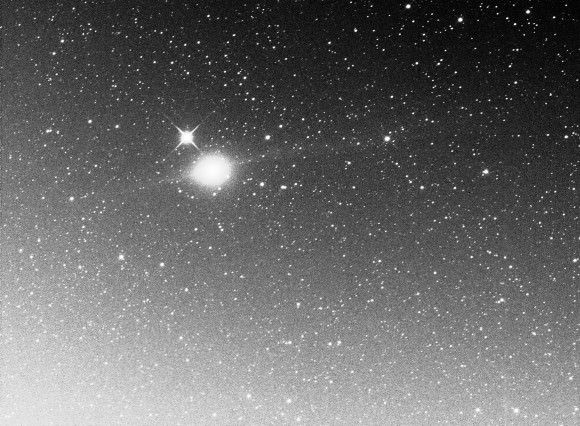
Comet Lulin is On the Way!
Written by Nancy Atkinson
(2/14/09)
A new comet is swinging around the sun, and soon it will be more visible to stargazers, perhaps even with the naked eye. Both professional and amateur astronomers have been tracking this unusual comet, named Comet Lulin. Thanks to amateur astronomer Gregg Ruppel, who lives in the St. Louis, Missouri area for sharing images he has acquired of Comet Lulin. Gregg took the image above on January 11, 2009. The most interesting characteristic of this comet is its orbit. Lulin is actually moving in the opposite direction as the planets, so its apparent velocity will be quite fast. Estimates are it will be moving about 5 degrees a day across the sky, so when viewed with a telescope or binoculars, you may be able to see the comet's apparent motion against the background stars. This is quite unusual! Today, January 14, the comet is at perihelion, closest to the sun. As it moves to its closest approach to Earth on February 24, Lulin is expected to brighten to naked-eye visibility in rural areas, (at best about magnitude 5 or 6) and will be observable low in the sky in an east-southeast direction before dawn.
The comet will pass 0.41 Astronomical Units from earth at its closest distance to Earth, about 14.5 times the distance between the Earth and the Moon. It has a parabolic trajectory, which means it may have never come this way before –this may be its first visit to the inner solar system
Lulin was jointly discovered by Asian astronomers in July of 2007. Quanzhi Ye from China first saw the comet on images obtained by Chi-Sheng Lin from Taiwan, at the Lu-lin Observatory.
The discovery of Comet Lulin (also known as C/2227 2007 N3) was part of the Lulin Sky Survey project to explore the various populations of small bodies in the solar system, especially objects that could be a hazard to the Earth.
It has both a tail and an anti-tail, visible in this image.
Thanks again to Gregg Ruppel for the great images of Comet Lulin. For more information about Lulin, see Gregg's Astronomy Page, Quanzhi Ye's page, Lu-lin Observatory, and the Visual Astronomy website.
www.universetoday.com/2009/01/14/comet-lulin-is-on-the-way/



